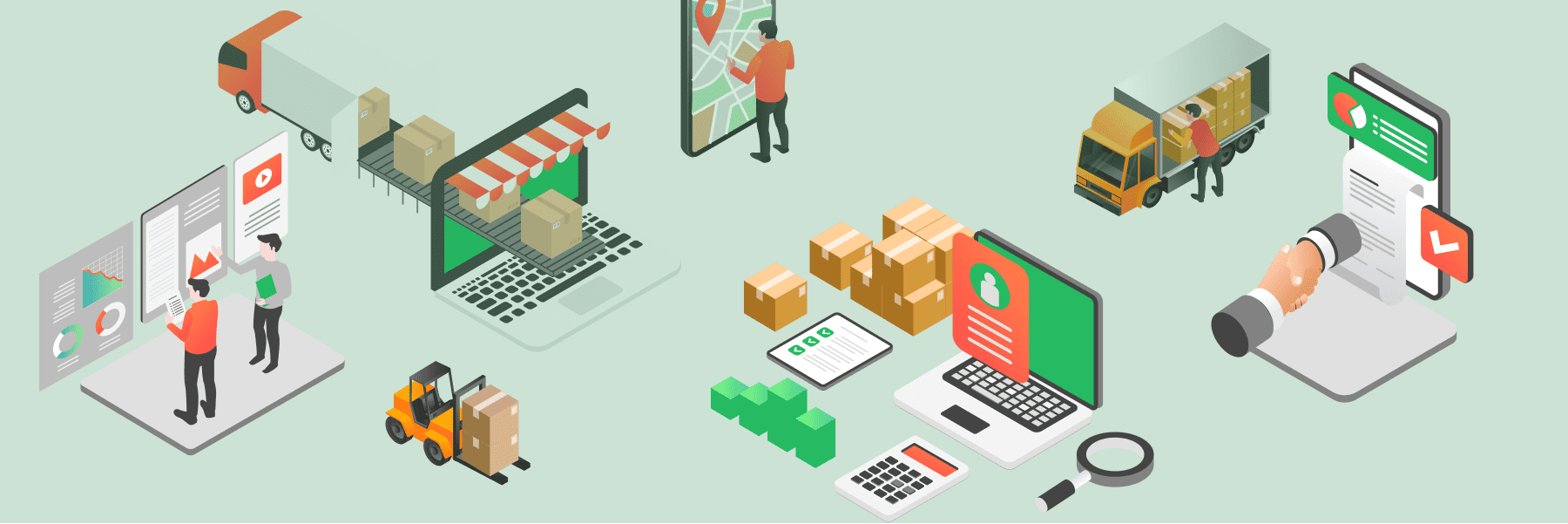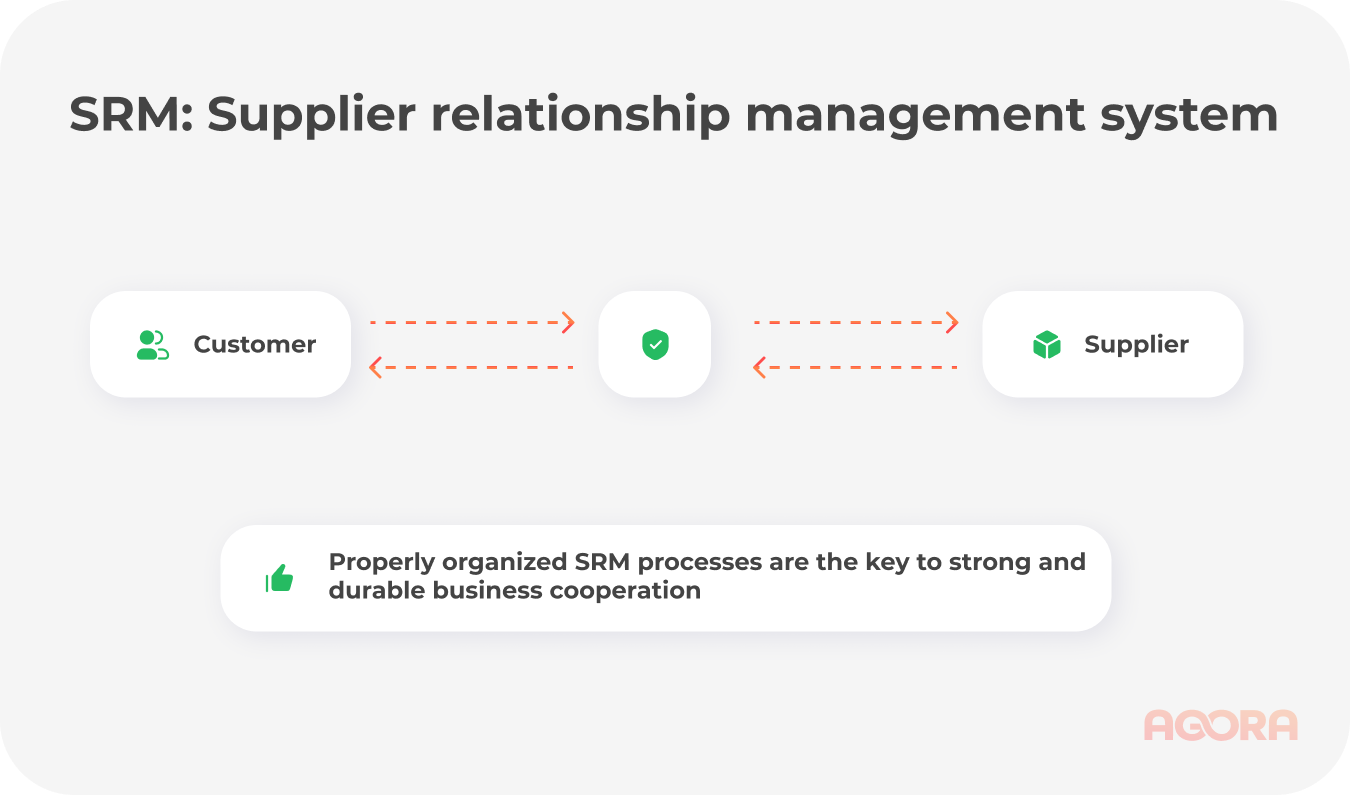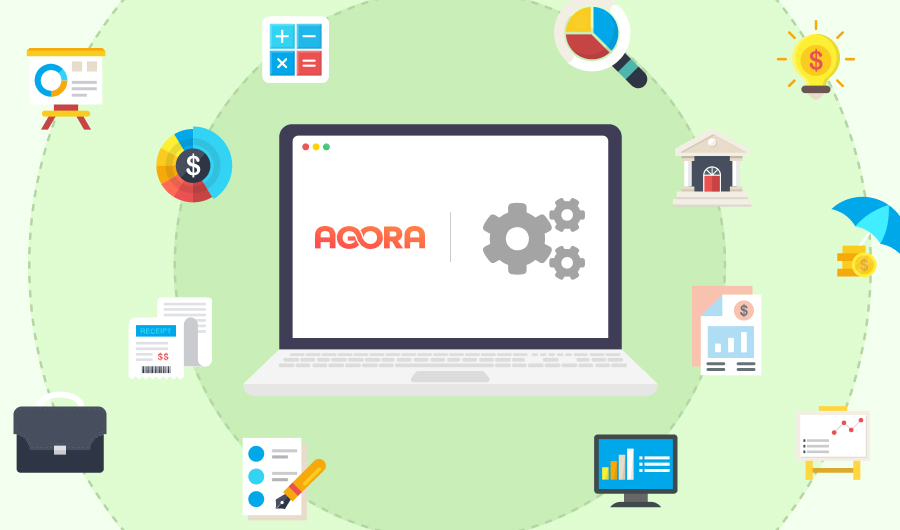
SRM system for increasing the efficiency of enterprise procurement
Supplier Relationship Management System comprises a set of measures for managing relationships with suppliers.
SRM constitutes a very significant cycle for organizations. It allows you to identify key commodity supply groups and adopt a step-by-step strategy in order to ensure competent control over these categories.
From history to modern reality
Amazingly, the SRM solution has been implemented for over 35 years! It is still relevant for the majority of enterprises that are linked to procurement activities. The solution was invented by Peter Kraljič, McKinsey consultant. Little did he know that his brainchild would be relevant not only in 1983, but also in 2022.
The point of Kraljič’s proposal was the following:
- Customers should always opt for a proactive model when managing procurement.
- It is necessary to study and understand the impact of certain product groups on the risks and profitability of a company.
- It is essential to develop supply management strategies based on the most recent statistical data to minimize risks while increasing profitability. This is what the SRM system basically means.
- To aspire to maximize efficiency, analyzing every decision and interaction with partners.
The years are passing by, but the needs in supply remain considerable. Modern companies still need regular and prompt logistics, and the SRM system helps simplify the cooperation with suppliers and organize a complete and scalable supply cycle while reducing labor, time and financial costs.
It is important to keep in mind that SRM is fundamentally different from cooperation with the key partners, such as CRM. People tend to confuse the two terms, frequently replacing one with another. However, these terms are connected with completely different areas, regardless of the fact that their work may sometimes overlap within a single business environment.
SRM includes four steps:
- Identification of the areas requiring close attention. Identification of the needs of an organization, which include collecting applications from the company’s departments for making specific purchases. Control over the stock. A road map, or a general strategy, of the enterprise’s supply and of the budgeting of procurement activities is adopted according to the summary received.
- Strategic supplier segmentation. Corporate customers should always juxtapose the work of every supplier with the risks and profitability of their companies. This step does also include holding auctions, competitions and other procurement procedures.
- Developing tactics for interacting with suppliers. This step can be conducted with the direct participation of contractors. For instance, in order to develop plans of mutually beneficial collaboration and methods to satisfy the needs of the organization to the greatest extent.
- Implementation of the defined strategy and repetition of the cycle in order to improve the processes. At this stage, the analysis of the procurement process, which enables to identify previously unacknowledged problem areas and improve them subsequently, plays a crucial role.
All these actions can be depicted as a continuous cycle with a scheme:

Furthermore, the cooperation strategy of the SRM system may include the development of harmonized interaction and the implementation of such a system. The feedback on the convenience and effectiveness of the interaction system from suppliers (that represent the focus group) is collected later on. Besides, the gathering of statistics and proposals for optimization with subsequent analysis of the received data is conducted, the necessary modifications are implemented, then the updated cycle is launched again. It is therefore possible to get the most recent feedback while maintaining uninterrupted communication with suppliers, as well as creating the best conditions for cooperation.
It is better to conduct such procedures using automation tools through SRM platforms, which enables you to save a large amount of time and promptly respond to any changes. Meanwhile, the online system of interaction with EDI will allow you to establish closer business links with suppliers.
The era of the “obsolete” SRM has come to an end. Nowadays, the functionality of Excel spreadsheets is extremely insufficient, and interactions by mail, meetings and calls are left far behind. A convenient SRM system for diverse variations of procurement has come to substitute the outdated methods.
Investing in such a technological solution does often mean significant expenses. However, it also means quick payback.
The advantages of implementing an SRM system:
- Reduction of labor costs for preparing and conducting procurement activities. Freeing up precious time of directors and procurement managers.
- Facilitation of the procurement cycle for both customer and supplier due to the SRM platform and different integration software. Reduction of material costs of the procurement procedure, minimization of the risk of inaccuracies or slow response of the employers.
- Maximization of the effectiveness of cooperation with suppliers due to, for instance, convenient guides and catalogs available online at any time. Or due to electronic purchases requisition forms.
- The ability to quickly collect statistics and draft analytical reports based on the data permanently provided by SRM.

The right tactics of strategical managing relationships with suppliers (the SRM platform) is similar to art with a great deal of creativity. It is a continuous search for innovation opportunities in the area of product development or in processes improvement (for example, with an SRM platform or another solution). At the same time, it represents the abandonment of the practice of relentless cost-cutting that the procurement community is pursuing. The costs are replaced with the methods of increasing efficiency with no infringement of company’s interests.
Implementation of the SRM platform - How to make the right choice
Some providers tend to offer their own SRM systems. However, buyers, especially the large ones, often have their local software that can be integrated with the main electronic platform (in the case of procurement, with the ETP).
There are many examples of trading SRM platforms focusing on large customers and having a base of diverse suppliers. At the same time, there are separate programs. Even though these solutions have their own advantages and disadvantages, they both imply the need for interacting with a local system of accounting and management, which, in turn, may cause delays in decision-making.
There is a great way out provided by digitalization that is entering more and more economic sectors, including B2B, every day. Due to this, a complete SRM procurement system has become accessible for every company. It is not very expensive, and has a short implementation period. Thus, an enterprise can order the creation of a complex system based on the AGORAB2B platform with SRM integration in order to automate the procurement management to the maximum extent. Apart from quick online document flow and convenient interaction with suppliers, the platform considerably reduces the time for processing applications and subsequent management of contracts.
It offers excellent prospects for business scaling and increasing profits. When suppliers gain remote access to advantageous purchases and may use it at any time, the relationships with them reach a lew level, full compliance with key principles of an adequate and effective SRM platform is achieved, while the main perceptible and of course pleasant results are the growth of income and acceleration of working processes.
Also read


